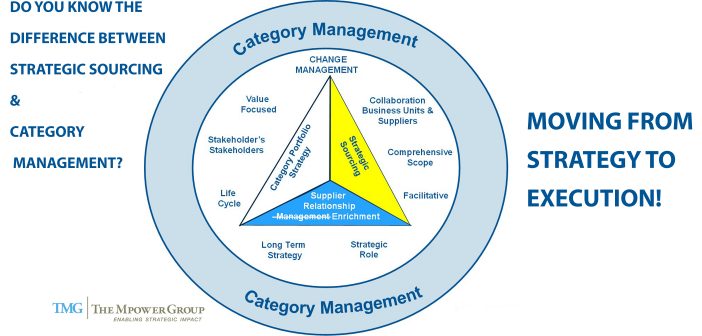A big thank you to those who have read this blog series and have commented on it. The overwhelming response means that we’ve struck a chord in the community and there is interest in the topic – Wonderful!! About six weeks ago I wrote about Leadership being one of the key elements required to move from Strategic Sourcing to Category Management and I stated “98% of a leader’s job is selling the vision and the value of Procurement, first within his/her own organization (Procurement) and then throughout the entire company”. Last week, I read an article in HBR “How the Most Successful Teams Bridge the Strategy – Execution Gap” and I believe there is a great tie-in here. While Leaders MUST have a vision, and articulate that vision to their team and the rest of the organization, they also need to execute that vision and the “strategy-to-execution gap is an enduring problem with no easy solution”. I have written about this in previous blogs but I feel like this article had some VERY good advice on how to bridge the gap. This was based on a study of about 50 enterprise leadership teams and what set them apart. Here were some key take-aways for me:
Commit to an identity. Strategy is key. You must define your value proposition and translate your vision into actionable goals. The key differentiator was “aligning the organization around that strategy through frequent internal communications and driving a consistent message downward into the organization”. Communication is critical and I so often hear that leaders are too busy to communicate to their own people – this is an easy fix.
Translate strategy into everyday processes and capabilities. Focus is critical here. Establishing clear goals and corresponding metrics help a leader to allocate the appropriate level of resources. Those metrics can then be used to track progress, hold people accountable and reallocate resources if needed. A key differentiator was “creating a permeable membrane between the organization’s mission and its day-to-day activities.” In addition, the ability to stay agile in course-correcting when the needs of the business change is also critical.
Concentrate on the unique cultural factors that fuel success. Paying attention to the culture while managing change is critical here. “Spend more time engaging the organization in ongoing dialogue about cultural enablers and barriers to execution; including forums for employees to voice concerns via surveys (e.g., employee engagement) and actual dialogue.” A carefully crafted, customized Change Management program is essential to bridging the strategy-to-execution gap.
Optimize talent capabilities. Execution must be driven by people, which I would argue are your most valuable asset. You must ensure you have the right competencies in place, give your people challenging assignments, establish and review development plans, ensure you have succession plans in place and provide competitive compensation in order to attract and return the best people.
Prioritize. A simple concept that is not easily achieved. There is always more work then there are resources but careful planning and prioritization can help. Move tactical work and fire-fighting to the lowest level within the organization so that your strongest people can operate at a strategic level.
Shape the Future. Be proactive not reactive. This is REQUIRED to make the transition from Strategic Sourcing to Category Management. “Spend more time influencing high-level stakeholders by identifying their needs and managing their expectations. Spend more time planning for the future by setting direction, creating a vision, and defining their strategy. Shape the future by responding to change in the present by positioning the enterprise for future success.”
Strategy is important. Without one it is impossible to move forward BUT as Sir Winston Churchill once said. ““However beautiful the strategy, you should occasionally look at the results.” 😊!



1 Comment
Pingback: Do You Know the Difference Between Strategic Sourcing and Category Management – Create a Fail-Safe Environment - News You Can Use